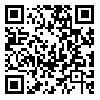1. Gallahue DL , Ozmun GC, Goodway JD. Understanding Motor Development: Infants, Children, Adolescents, Adults. 7th Edition, Kindle Edition. 2012.
2. Payne VG, Isaacs LD. Human Motor Development a Lifespan Approach. Eight Edition, McGraw-Hill Higher Education. 2012.
3. Atun-Einy O, Berger SE, Scher A. Assessing motivation to move and its relationship to motor development in infancy. Infant Behavior and Development, 2013; 36(3), 457-469. [
DOI:10.1016/j.infbeh.2013.03.006]
4. Abdoli B. Psychosocial foundations of physical education and sports. Tehran, Bamdad Ketab Publications, 2005. In Persian.
5. Thelen, E. Dynamic systems theory and the complexity of change. Psychoanalytic Dialogues: 15., 255-283. 2005. [
DOI:10.1080/10481881509348831]
6. Von Hosteen C. Action in development. Developmental Science: 10. 54-60. 2007. [
DOI:10.1111/j.1467-7687.2007.00564.x]
7. Berger SE, Adolph KE, Lobo SA. Out of the toolbox: Toddlers differentiate wobbly and wooden handrails. Child Development: 2005. 76., 1294-1307. [
DOI:10.1111/j.1467-8624.2005.00851.x]
8. Khalaji H. Investigating the relationship between anthropometric characteristics and motor performance of 6 to 8-year-old students with experience and without experience in Arak Kindergarten (2004-2005 academic year), Peyk Noor: 2004. No. 4 (3): 18-30. In Persian.
9. Loovis EM, Butterfield SA. Relationship of hand length to catching performance by children in kindergarten to grade 2. Perceptual and motor skills. 2003 Jun;96(3_suppl):1194-6. [
DOI:10.2466/pms.2003.96.3c.1194]
10. Weikartr D. A cooparative study of the preschool: curriculum,in C.seefeld(Ed). The Early childhood curriculum New arm armicha university. 1969. pp:20-29.
11. Zigler E, Valentine J. Project Head Start: A legacy of the war on poverty. 1979.
12. Housden T, Kam R. Full-Day Kindergarten: A Summary of the Research.1992.
13. Lemos AG, Avigo EL, Barela JA. Physical education in kindergarten promotes fundamental motor skill development. Advances in Physical Education. 2012 Feb 16;2(01):17. [
DOI:10.4236/ape.2012.21003]
14. Chaves R, Baxter-Jones A, Gomes T, Souza M, Pereira S, Maia J. Effects of individual and school-level characteristics on a child's gross motor coordination development. International journal of environmental research and public health. 2015 Aug;12(8):8883-96. [
DOI:10.3390/ijerph120808883]
15. Doralp S, Bartlett D. Infant Movement Motivation Questionnaire: Development of a measure evaluating infant characteristics relating to motor development in the first year of life. Infant Behavior and Development. 2014 Aug 1;37(3):326-33. [
DOI:10.1016/j.infbeh.2014.04.002]
16. Provost B, Heimerl S, McClain C, Kim NH, Lopez BR, Kodituwakku P. Concurrent validity of the Bayley Scales of Infant Development II Motor Scale and the Peabody Developmental Motor Scales-2 in children with developmental delays. Pediatric Physical Therapy. 2004 Oct 1;16(3):149-56. [
DOI:10.1097/01.PEP.0000136005.41585.FE]
17. Rahmaniresa A. Determination of Peabody Development Motor Scale (PDMS) validity and reliability in 0-2 year-old infants of Tehran. Master of sciences dissertation, University of Welfare and Rehabilitation Sciences. 2008.
18. Farsi A, Abdoli B, Kaviani M, Kaviani A (2010). The effect of perceptual-motor experience on the motor development benefit of large and fine movements of 5-8 months old infants. Growth and learning of motor-sports- No. 5- P.: 84-71. In Persian.
19. Shirley MM. The First Two Years. Vol. I, Postural and Locomotor Development; Vol. II, Intellectual Development; Vol. III, Personality Manifestations.1931.
20. Adolph KE, Cole WG, Komati M, Garciaguirre JS, Badaly D, Lingeman JM, Chan GL, Sotsky RB. How do you learn to walk? Thousands of steps and dozens of falls per day. Psychological science. 2012 Nov;23(11):1387-94. [
DOI:10.1177/0956797612446346]
21. Gibson EJ, Pick AD. An ecological approach to perceptual learning and development. Oxford University Press, USA; 2000. [
DOI:10.1207/S15326969ECO1204_04]
22. Newman BM, Newman PR. Development through life: A psychosocial approach. Cengage Learning; 2017. Apr 12.
23. Winders PC. The goal and opportunity of physical therapy for children with Down syndrome. 2011.









